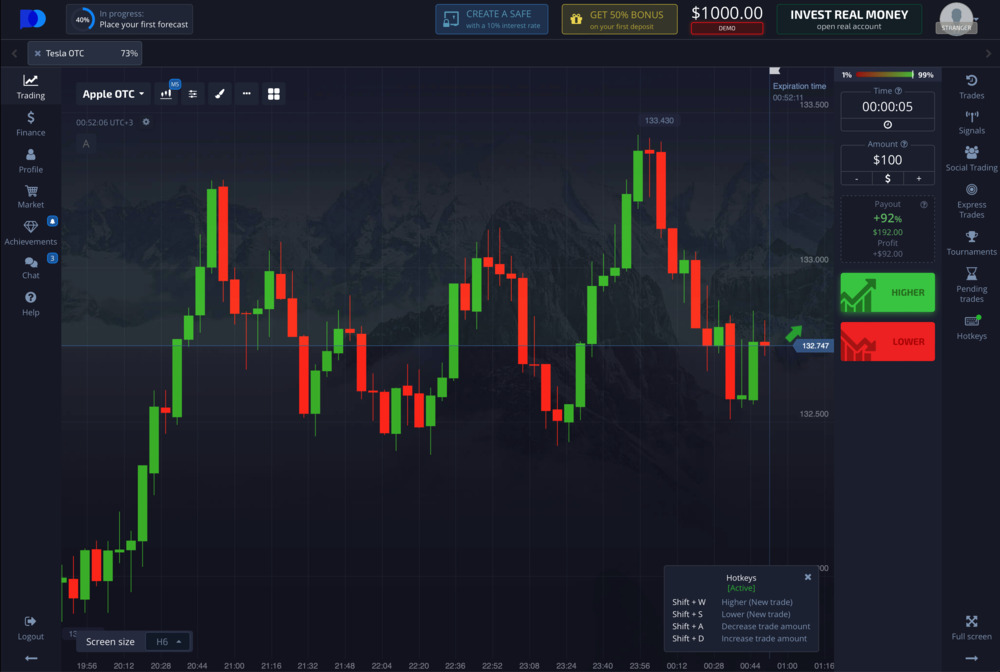
Bollinger Bands Strategy Pocket Option: A Comprehensive Guide
The Bollinger Bands Strategy Pocket Option Стратегия Bollinger Bands is one of the most popular technical analysis tools used in the financial markets. This strategy can be particularly beneficial for traders utilizing Pocket Option, a platform known for its user-friendly interface and vast trading options. In this article, we will delve into the intricacies of the Bollinger Bands, their components, and how you can effectively implement this strategy in your trading to maximize profits.
What are Bollinger Bands?
Bollinger Bands are a type of statistical chart characterizing the prices and volatility over a specified time frame. They consist of three lines: the middle band (a simple moving average), and the upper and lower bands, which are set two standard deviations away from the middle band. The concept behind Bollinger Bands is that they effectively capture price movements and help traders identify potential market conditions.
Components of Bollinger Bands
- Middle Band: This is typically a 20-period simple moving average (SMA) that represents the average price over the selected period.
- Upper Band: This band is calculated by adding two standard deviations to the middle band. It indicates overbought conditions when the price touches or exceeds this level.
- Lower Band: Conversely, this band is formed by subtracting two standard deviations from the middle band and can indicate oversold conditions when the price comes close to or below this level.
Understanding Market Conditions with Bollinger Bands
Traders often use Bollinger Bands to determine whether the market is in a state of high volatility, low volatility, or trending. The space between the upper and lower bands is an indicator of market volatility; the wider the bands, the higher the volatility, and the narrower the bands, the lower the volatility. Understanding these dynamics can help traders formulate better strategies.
Market Volatility Insights

When the bands contract significantly, it suggests a potential upcoming increase in volatility. This is often referred to as a “Bollinger Band squeeze.” In contrast, when the bands expand, it indicates that the current trend may continue or that the market may enter a period of consolidation.
Implementing the Bollinger Bands Strategy on Pocket Option
When trading on Pocket Option, utilizing the Bollinger Bands strategy involves a structured approach. Here’s a systematic method:
1. Setting Up Your Chart
To begin, select a trading asset and set the time frame suited for your trading style (1 minute, 5 minutes, etc.). Next, add the Bollinger Bands indicator to the chart. Ensure you configure the moving average to a 20-period SMA and standard deviation to 2.
2. Identifying Trading Signals
Bollinger Bands offer several signals that can aid your trading decisions:
- Buy Signal: This occurs when the price touches the lower band, indicating potential oversold conditions. Monitor for a price reversal towards the middle band.
- Sell Signal: Conversely, a sell signal is generated when the price hits the upper band, suggesting overbought conditions, especially if followed by a price reversal.
3. Utilizing Price Rejections

When the price interacts with the bands, observing price rejection can provide additional confirmation. If the price touches the lower band and quickly reverses upwards, it signifies a stronger buy signal. The same applies to selling; a strong rejection from the upper band often indicates a potential sell opportunity.
Combining Bollinger Bands with Other Indicators
While Bollinger Bands are powerful on their own, combining them with other technical indicators can enhance your trading insights. Here are a few suggestions:
- Relative Strength Index (RSI): Use RSI to confirm overbought or oversold conditions suggested by Bollinger Bands.
- Moving Average Convergence Divergence (MACD): Implement MACD to identify trends and momentum, increasing the reliability of your signals.
Risk Management in Trading with Bollinger Bands
As with any trading strategy, risk management is crucial when using Bollinger Bands on Pocket Option. Here are some key principles:
- Set Stop-Loss Orders: Always define stop-loss levels to protect your capital. This can be placed just beyond the respective band.
- Take Profit Levels: Consider setting take-profit targets when the price reaches the opposite band or specific Fibonacci retracement levels.
Backtesting and Practice
To optimize your Bollinger Bands strategy, it’s advisable to backtest your approach. Pocket Option offers demo accounts where you can practice without risking real money. By analyzing past performance, you can refine your strategy and gain confidence before entering live trades.
Conclusion
The Bollinger Bands strategy on Pocket Option is a powerful tool that, when used correctly, can significantly enhance your trading success. Understanding the nuances of market conditions, identifying reliable signals, and managing risk effectively are vital components of this approach. By combining Bollinger Bands with other indicators and practicing sound risk management, traders can increase their chances of achieving consistent profits. Armed with this knowledge, you’re better prepared to navigate the exciting world of trading on Pocket Option!

